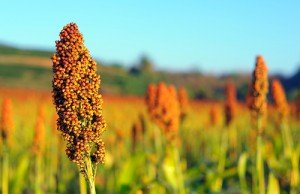
Researchers at Texas A&M University conducted a study that brought new insights regarding bioenergy sorghum, finding that, more than an energy supply, it may offer a “sink” for greenhouse gases.
The study, called “Impacts of Biomass Sorghum Feedstock Production on Carbon Sequestration and Greenhouse Gas Emissions” and published on the National Institute of Food and Agriculture website, measured greenhouse gas emissions from biofuel production scenarios, aiming to develop advanced biomass sorghum cropping systems through improved nutrient management, rotation, and decreased soil disturbance. The ultimate goal was to increase carbon sequestration, reduce greenhouse gas emissions, and improve the sustainability of biomass sorghum feedstock production in the south central United States.
The team worked in a field near College Station, used since 2008 for bioenergy sorghum production. At the field, they collected soil samples prior to the start of the study and each following spring in order to study changes in soil carbon storage and nutrient availability over time. They then analyzed direct and indirect greenhouse emissions, soil carbon sequestration to a 3-foot depth, and theoretical biofuel yield from eight different bioenergy sorghum production scenarios.
During their research, they found that annual accrual rates of soil organic carbon were much higher than anticipated, ranging from 1.2 to 3.3 tons of carbon per acre across all treatment combinations. The corn-sorghum sequence, on the other hand, had a significantly lower annual accrual rate than monoculture sorghum. This might be due to the high yield potential, as well as the fact that the study was conducted in carbon-depleted soil.
Unfertilized, monoculture sorghum with half the yield returned to the field to provide nutrients and organic matter had the greatest overall biofuel production efficiency based on net greenhouse gas emissions savings. However, crop rotation and fertilization would be recommended to minimize pest pressure and sustain long-term crop yield.
One of the researchers, Dr. Frank Hons, professor of soil science and AgriLife Research Faculty Fellow explained these results have “significant implications for net greenhouse gas emissions, soil organic carbon sequestration and life-cycle analyses,” adding that further investigation is warranted.
The study was funded by the AgriLife Research Cropping Systems bioenergy program and a U.S. Department of Agriculture-National Institute of Food and Agriculture grant.
Alongside Dr. Hons, Dr. Joe Storlien, postdoctoral research associate, Dr. Jason Wight, assistant research scientist, and Dr. James Heilman, professor of environmental physics, jointly worked on the research.
Source: Bioenergy Sorghum May Be a “Sink” For Greenhouse Gas Emissions, Texas A&M Study Finds

